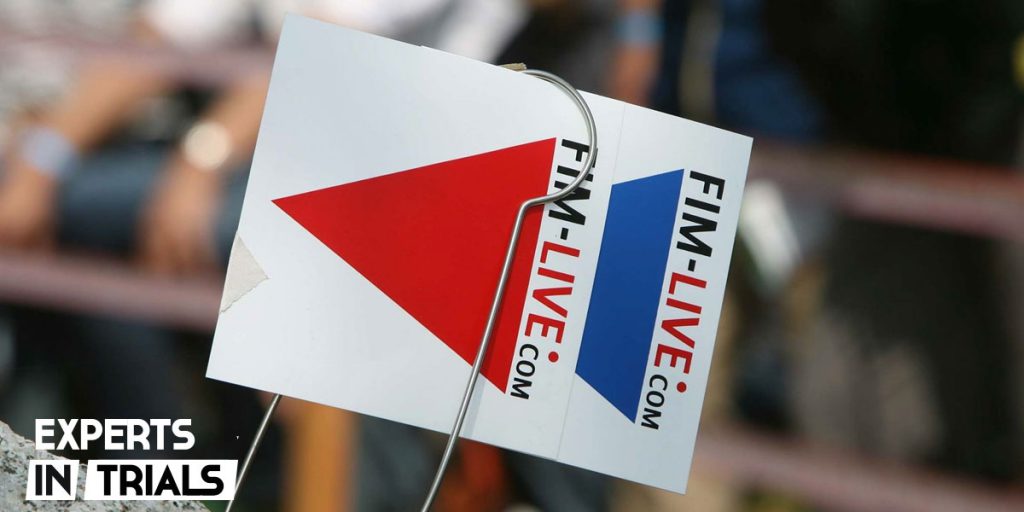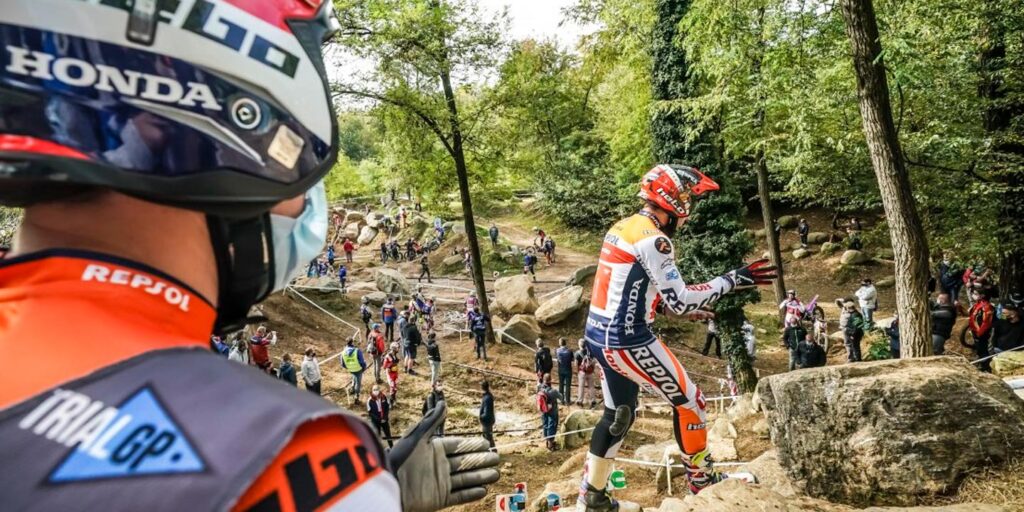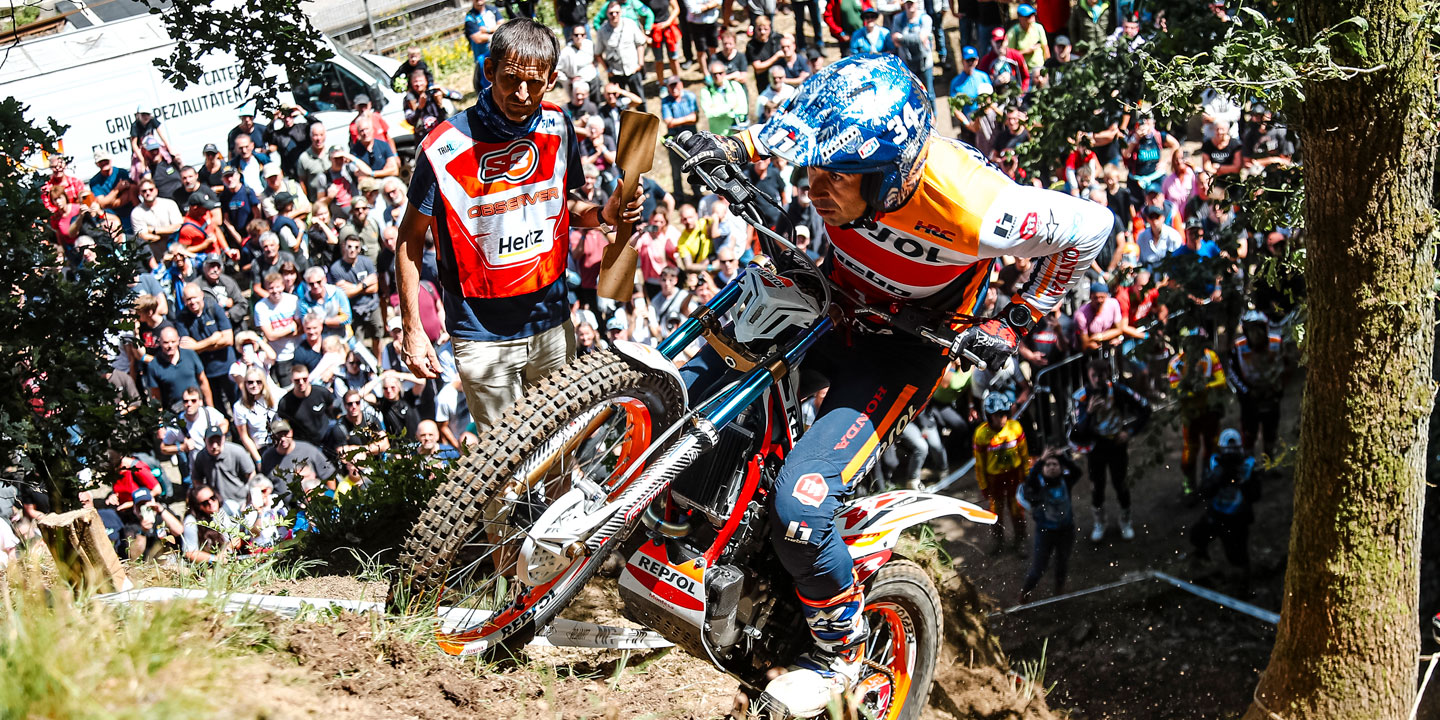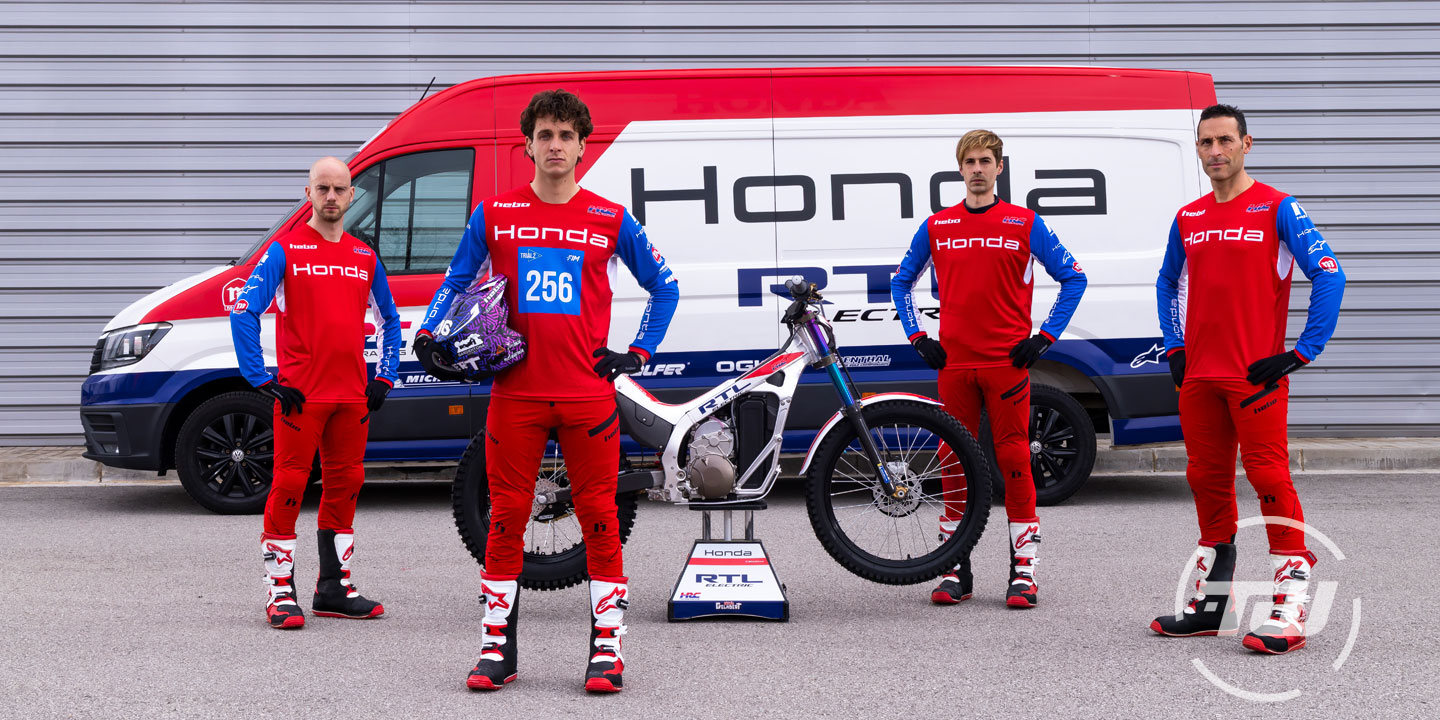The NONSTOP The Regulations of the Trial Bike Since the origins of trial, although today it is generating great controversy, since the technical evolution of riding and the capacity of the bikes have made clear the incompatibility with this regulation for reasons that we are going to explain below.
To understand the NONSTOP in the trial bike, you have to go back to the sporting philosophy of trial in times such as the sixties, seventies and even the beginning of the eighties.
The type of competitions and zones that were marked at the time did not require the rider to stop; We are talking about relatively long sections where skill and balance prevailed, but they were not designed so that the pilot had to constantly stand in front of the obstacles, or tackle them in most cases from a standstill.
NONSTOP IN THE TRIAL
In the eighties and nineties, when Jordi Tarrés revolutionized trial riding, followed by great riders of the time, such as Amós Bilbao, Dougie Lampkin, Marc Colomer and many others, we can see how these riders radically changed the riding of trial bikes.
This coincides chronologically with the evolution of trial bikes at the chassis level, with motorcycles already equipped with more evolved damping, with monoshocks, lighter chassis and engines that began to be equipped with mechanical clutches, which allowed the engine to be fired at revs in the face of an obstacle.
All of the above encourages areas to change and evolve. The pilots start to stop inside the zone, to find balance, to position themselves and to make big obstacles from a standstill.
We can say that in these years we have the golden age of trial, due to the coverage and arrival of our sport to the general public.
TRIAL BIKES AND NONSTOP
Currently, under Michaud’s tutelage, the rules that prevail in trials are the NONSTOP. This competition format penalizes the driver with the highest score, a fiasco or five points, the moment he stops within the zone, regardless of whether he has satisfactorily passed the gates of his level. In other words, it is a system that only penalises the rider stopping in the zone.
The NONSTOP regulation is something that the vast majority of trial riders are opposed to and have openly stated so. Why does NONSTOP fail in Trial?
NONSTOP FAILS IN THE TRIAL
The opinions about the decline and failure of the nonstop in trials are a very personal opinion, but in the paddock this view is generalized.
The first reason for the failure of the NONSTOP in trial is that there is no tool capable of measuring the rider’s stop in the area, so the criterion is always at the mercy of the judge.
When is it a fiasco? Half-second, one-second, or quarter-second stops? In the end, depending on the area and its difficulty, in the same race you can see that there are constantly different criteria among the judges.
Logically, when the first rider enters the zone, which are usually the ones that occupy a lower place in the classification, the judge himself does not know how the driver is going to face that area, nor its line, nor its real difficulty. This generates an obvious consequence, and that is that a judge is always more demanding with the first drivers, than with the last ones, where he already understands where he can be more lax.
The NONSTOP It is also a problem for the public who come to watch the trial competitions, since they understand that trial is a discipline where the objective is to overcome the proposed obstacles in a clean way, but from the tape it is not understood that a rider adds the maximum penalty once the area has been perfectly passed. but that it has stopped for half a second on a placement.
One of the logical solutions to give the desired dynamism to this sport within the zone is as simple as determining a maximum time to complete the zone. There it is the pilot who manages his time, knowing that if he lingers more than necessary in an encounter or placement, he will have to speed up at another point in the area. This maximum time already exists, so it is not understood that both factors exist: you cannot stop and you also have a maximum time in the zone.

THE FUTURE OF NONSTOP IN TRIAL
We’ve been hearing for over two years that it’s being tested A device that is placed on the front wheel of the trial bike, which would warn the judge in the zone in the event of a stop and thus could mark the fiasco with a universal criterion for all drivers. In this way there would be no double standards or the subjectivity of the judge himself, but this machine has already been tested and the result is not satisfactory according to the pilots.
Is it really necessary to complicate things so much? As we said before, limiting the time in the driver’s zone would already be printing the expected dynamism. Nowadays the zone judge, with the subjectivity we were talking about, is the one who ends up conditioning the result of a competition. And if we have fifteen zones, we have fifteen different criteria. Here, those who lose the most are the riders at the tail, who are usually the first to start and do not know both the appropriate line and the level of flexibility in the stop at the discretion of the judge.
The “top”, who come from behind, gather information from these first pilots, so that they end up studying, more than the zone, the behavior of the zone judge.
NONSTOP AND TRIAL, WHO IS INTERESTED?
There are two things that must come first: the spectacle and that the result is fair. From Trialworld we have interviewed brands and riders, without yet finding anyone who supports NONSTOP as an effective regulation. Thierry Michaud, FIM head of the Trial World Championship, is not giving up and maintains his commitment to the NONSTOP, although years ago he made it clear that he would study other formulas if these regulations were not effective. Perhaps behind it there are other pressures that prevent the trial from evolving towards a more logical criterion for the times we live in.
Another aspect to take into account is that, theoretically, the NONSTOP would serve to lower the level of the zones, since the clubs would mark the zones thinking that there is no such time for the placement to be placed. The reality is that the usual drivers win and the “tail” drivers in the standings are no closer to the leading records.

BEYOND NONSTOP IN TRIALS
Finally, to close this reflection, we must ask ourselves why there is so much focus on working on obsolete regulations, but it does not facilitate the dissemination of content and trial competitions, which for the average fan is absolutely impossible to follow with a minimum of quality.
As long as there is no effort of audiovisual alliances to bring trial to the general public, something that was key in the 90s, we will continue to have a sport of minorities, with ignorance and difficult to understand. It also explains the difficulty for pilots to progress in their sporting careers and for the big sponsors to enter this specialty.
Nonstop moto trial video
In this video, recorded nine years ago, the FIM explains the philosophy of NONSTOP as a regulation as opposed to traditional STOP .
Below we leave you a second video with the reality of a competition of the X-Trial World Championship where the NONSTOP is applied and it can be seen that on a regular basis the rider does make stops in the area.










